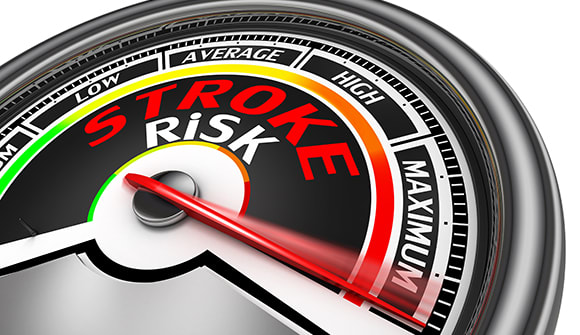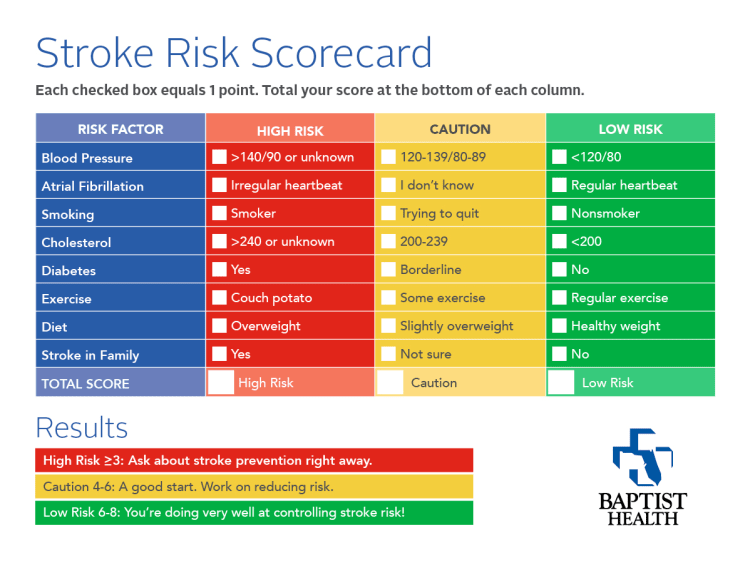Do you know your stroke risk?
Use this scorecard to find out.
Article Author: Juliette Allen
Article Date:

Think about how long it takes you to pour your morning cup of coffee. In the 40(ish) seconds when you choose your mug, pour the java and add a little cream and sugar, someone in the United States has had a stroke, according to the Centers for Disease Control and Prevention.
Lifestyle choices can put people at higher risk for the life-threatening condition. Fill out the scorecard below to find out your stroke risk and what you can do to lower it.

BE FAST if you suspect a stroke
A stroke is an emergency. BE FAST and call 911 immediately if you notice any of these signs in yourself or someone else:
- Balance: Is there a sudden loss of balance or coordination?
- Eyes: Is there persistent blurred vision and/or sudden trouble seeing?
- Face: Ask the person to smile. Does one side of the face droop?
- Arms: Ask the person to raise both arms. Does one arm drift downward?
- Speech: Ask the person to repeat a simple phrase. Is their speech slurred or strange?
- Time: If you observe any of these signs, call 911 immediately
Reduce your stroke risk
Your primary care physician can help you make lifestyle changes to reduce your stroke risk. Steps may include:
- Knowing your blood pressure.
- Finding out whether you have atrial fibrillation (Afib) or high cholesterol.
- Stopping smoking.
- Following recommendations to control diabetes (if diabetic).
- Exercising regularly.
- Eating a diet low in salt and animal fat.
Baptist Primary Care providers are available to assess your overall wellness and provide guidance on how to be your healthiest self. To find the right provider for you, call 904.202.4YOU or fill out the appointment request form. To learn more about Baptist Health’s Stroke and Cerebrovascular Center, visit baptistjax.com/stroke.
Reference: Centers for Disease Control and Prevention



